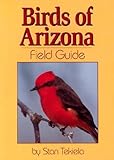The 20-foot saguaro in my front yard is finally becoming more than just a “big pole.”
When we moved into our home a little more than 10 years ago, it had absolutely no vegetation in the yard around the house. Due to some problems with septic system paperwork — not the septic system itself, mind you — it was two years before we were able to plant anything.
We had a landscape designer come over. He had a grand plan for our empty canvas of a yard. It included waterfalls and all kinds of non-native vegetation. When we told him we wanted a saguaro, he said, “What for? It just looks like a big pole in your yard.”
Needless to say, he didn’t get a contract with us.
Instead, we decided to do it ourself. Although it may not have been the best decision, it certainly wasn’t a bad one. We were able to plant whatever we liked wherever we liked it. And since we wanted a saguaro, we bought…well, two of them.
If you’re not familiar with the saguaro cactus, it’s a very tall, very slow-growing plant that grows in Arizona and northern Mexico. Propagated by seed, it takes at least 5 years for the plant to reach a size that can even be seen on the desert floor. When the cactus reaches 50-75 years old, it may begin to sprout “arms” that give it its characteristic look. Indeed, the saguaro cactus is an icon for the American Southwest.
When you buy a saguaro, it is always a transplant from somewhere else — often from vacant land being developed for homes or mining. It’s illegal in Arizona to dig up or cut down a saguaro without a permit. Indeed, if you hit one of these with your car and it falls down (hopefully not on you), you’ll be fined. So you must buy from a reliable source and you must ensure that it has been properly tagged by the folks responsible for monitoring this kind of stuff.
Saguaro prices are determined by size. When we bought ours, the going rate was $35 per foot. One of ours was only 5 feet tall; the other was about 16. Neither one had arms. If a saguaro does have arms, the arms are measured, too. So if you have a 10-foot cactus with 2 3-foot arms, you’ve got a total of 16 feet of cactus. Obviously, the ones with arms are more costly, which is why ours didn’t have any.
How do you plant a 16-foot cactus? Fortunately, we didn’t have to do it. The guy we bought it from did it for us. He had a special truck that cradled the cactus almost horizontally for transportation. When he got to our yard, he backed the truck up to the hole he’d dug for it. He then raised the top end of the cactus with a lift on the truck. There was a lot of rope holding and pulling and the constant fear that the thing would topple over. But he managed nicely and the cactus stands upright to this day, 8 years later, now close to 20 feet tall.
 We always worried about this investment in cactus. After all, when a saguaro dies, it doesn’t do it immediately. It takes years. He guaranteed it for 5 years. In reality, it would take at least that long to die. Although the one in the back yard seems very happy and looks healthy, the one out front has become home to birds, which have burrowed nests in the side of it. And it doesn’t always look as healthy as it should.
We always worried about this investment in cactus. After all, when a saguaro dies, it doesn’t do it immediately. It takes years. He guaranteed it for 5 years. In reality, it would take at least that long to die. Although the one in the back yard seems very happy and looks healthy, the one out front has become home to birds, which have burrowed nests in the side of it. And it doesn’t always look as healthy as it should.
But it must be healthy because it is now growing an arm. I first noticed it about a month ago when I photographed the snake on top of it. Now it appears to be growing remarkably quickly (for a saguaro) and, if I’m not mistaken, there’s a new arm bud for a second arm growing nearby!
You can see the new arm clearly in the WebCam image for this site, in case you want to monitor it. I’ll try to take another photo in six months or a year to bring readers up to date.
 Today, I started work on a book that I don’t think I’m supposed to talk about yet. And in using my MacBook Pro, I realized that I really miss my Mighty Mouse. So I ordered one. It’ll be here by the time I get back from my Brewster gig. I ordered a wired one because I really hate the wireless version of this mouse. (I have one at home and purposely didn’t bring it.)
Today, I started work on a book that I don’t think I’m supposed to talk about yet. And in using my MacBook Pro, I realized that I really miss my Mighty Mouse. So I ordered one. It’ll be here by the time I get back from my Brewster gig. I ordered a wired one because I really hate the wireless version of this mouse. (I have one at home and purposely didn’t bring it.)
 I also ordered two birdwatching books. Birds of Washington, which I borrowed from the local library, impressed me so much with its photos that I bought the Arizona version, too. I don’t know if this author has done all the states, but if you’re a birdwatcher and prefer photos over drawings, this might be the book for you. See if its available for your state.
I also ordered two birdwatching books. Birds of Washington, which I borrowed from the local library, impressed me so much with its photos that I bought the Arizona version, too. I don’t know if this author has done all the states, but if you’re a birdwatcher and prefer photos over drawings, this might be the book for you. See if its available for your state.
 The bird took off and I caught him in flight.
The bird took off and I caught him in flight. We always worried about this investment in cactus. After all, when a saguaro dies, it doesn’t do it immediately. It takes years. He guaranteed it for 5 years. In reality, it would take at least that long to die. Although the one in the back yard seems very happy and looks healthy, the one out front has become home to birds, which have burrowed nests in the side of it. And it doesn’t always look as healthy as it should.
We always worried about this investment in cactus. After all, when a saguaro dies, it doesn’t do it immediately. It takes years. He guaranteed it for 5 years. In reality, it would take at least that long to die. Although the one in the back yard seems very happy and looks healthy, the one out front has become home to birds, which have burrowed nests in the side of it. And it doesn’t always look as healthy as it should.